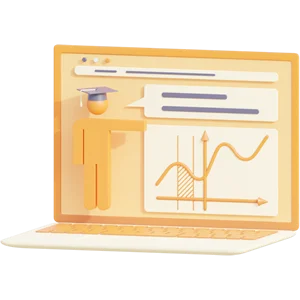NEW 2023 TEST BANK PATHOPHYSIOLOGY The Biologic Basis For Disease In Adults And Children 8TH EDITION BY KATHRYN L. MCCANCE
NEW 2023 TEST BANK PATHOPHYSIOLOGY The Biologic Basis For Disease In Adults And Children 8TH EDITION BY KATHRYN L. MCCANCE
Part 1: CENTRAL CONCEPTS OF PATHOPHYSIOLOGY: CELLS AND TISSUES Unit I: THE CELL
CHAPTER 01: CELLULAR BIOLOGY
MULTIPLE CHOICE
1. Which statement best describes the cellular function of metabolic absorption?
a. Cells can produce proteins.
b. Cells can secrete digestive enzymes.
c. Cells can take in and use nutrients.
d. Cells can synthesize fats.
ANS: C
In metabolic absorption, all cells take in and use nutrients and other substances from their surroundings. The remaining options are not inclusive in their descriptions of cellular metabolic absorption.
PTS: 1 DIF: Cognitive Level: Remembering
2. Where is most of a cell’s genetic information, including RNA and DNA, contained?
a. Mitochondria
b. Ribosome
c. Nucleolus
d. Lysosome
ANS: C
The nucleus contains the nucleolus, a small dense structure composed largely of RNA, most of the cellular DNA, and the DNA-binding proteins, such as the histones, which regulate its activity. The mitochondria are responsible for cellular respiration and energy production.
Ribosomes’ chief function is to provide sites for cellular protein synthesis. Lysosomes function as the intracellular digestive system.
PTS: 1 DIF: Cognitive Level: Remembering
3. Which component of the cell produces hydrogen peroxide (H2O2) by using oxygen to remove hydrogen atoms from specific substrates in an oxidative reaction?
a. Lysosomes
b. Peroxisomes
c. Ribosomes
d. Endosome
ANS: B
Peroxisomes are so named because they usually contain enzymes that use oxygen to remove hydrogen atoms from specific substrates in an oxidative reaction that produces H2O2, which is a powerful oxidant and potentially destructive if it accumulates or escapes from peroxisomes.
Ribosomes are RNA-protein complexes (nucleoproteins) that are synthesized in the nucleolus and secreted into the cytoplasm through pores in the nuclear envelope called nuclear pore complexes. Lysosomes are saclike structures that originate from the Golgi complex and contain more than 40 digestive enzymes called hydrolases, which catalyze bonds in proteins, lipids, nucleic acids, and carbohydrates. An endosome is a vesical that has been pinched off from the cellular membrane.
PTS: 1 DIF: Cognitive Level: Remembering
4. Which cell component is capable of cellular autodigestion when it is released during cell injury?
a. Ribosome
b. Golgi complex
c. Smooth endoplasmic reticulum
d. Lysosomes
ANS: D
The lysosomal membrane acts as a protective shield between the powerful digestive enzymes within the lysosome and the cytoplasm, preventing their leakage into the cytoplasmic matrix. Disruption of the membrane by various treatments or cellular injury leads to a release of the lysosomal enzymes, which can then react with their specific substrates, causing cellular self- digestion. The chief function of a ribosome is to provide sites for cellular protein synthesis. The Golgi complex is a network of flattened, smooth vesicles and membranes often located near the cell nucleus. The smooth endoplasmic reticulum is involved in steroid hormone production and removing toxic substances from the cell.
PTS: 1 DIF: Cognitive Level: Remembering
5. Which cAMP-mediated response is related to antidiuretic hormone?
a. Increased heart rate and force of contraction
b. Secretion of cortisol
c. Increased retention of water
d. Breakdown of fat
ANS: C
Antidiuretic hormone leads to increased retention of water in the body. Epinephrine causes increases in heart rate and force of contraction. Increased cortisol secretion is due to ACTH. Breakdown of fat is due to glucagon.
PTS: 1 DIF: Cognitive Level: Remembering
6. During which phase of the cell cycle is DNA synthesized?
a. G1
b. S
c. G2
d. M
ANS: B
The four designated phases of the cell cycle are: (1) the G1 phase (G = gap), which is the period between the M phase (M = mitosis) and the start of DNA synthesis; (2) the S phase (S = synthesis), during which DNA is synthesized in the cell nucleus; (3) the G2 phase, during which RNA and protein synthesis occurs, the period between the completion of DNA synthesis and the next phase (M); and (4) the M phase, which includes nuclear and cytoplasmic division.
PTS: 1 DIF: Cognitive Level: Remembering
Preview document (3 of 506 pages)
Knoowy benefits
$ 31,07
 Money back guarantee
Money back guarantee
 Documents can be downloaded immediately
Documents can be downloaded immediately
 $0.50 discount when paying with balance
$0.50 discount when paying with balance
-
 Receive free quiz questions with document
Receive free quiz questions with document

Specifications
- School: Chamberlain College Of Nursing
- Course: NURSING
Document
- Section: Examinations
- Made on: 09-19-2023
- Type: .pdf
- Pages: 506
- Language: English
Tags
Seller
Helps students with ALL BEST Revision; Guides,Exams,Summaries,Test Banks ...etc.WISHING YOU SUCCESS
Earn from your summaries?
Subjects of NURSING - Chamberlain College Of Nursing
More NURSING ›ati ati comprehensive predictor ati fundamentals proctored ati nutrition ati pharmacology ati rn comprehensive predictor comprehensive fundamentals health care health care / nursing health care/ nursing hesi hesi rn exit maternal newborn med surg medical nursing medical surgical mental health nurs nursing nursing & health pediatrics pharmacology test bank tncc
 Deal: get 10% off when you purchase 3 or more items!
Deal: get 10% off when you purchase 3 or more items!
Deal: get 10% off when you purchase 3 or more items!









